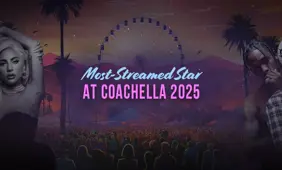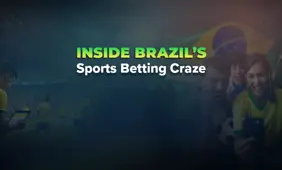Market Orientation and Value-Based Customer Experience in Casinos

Market orientation represents superior skills in understanding and satisfying customers. To consistently deliver value to casino customers, casino operators need to continuously collect information about their customers as well as competitors and share this information across the organization. The resulting experience offered to customers, based on these inputs, is better aligned with customer needs and wants and differentiated from competitors’ offerings. As a result, market-oriented casinos have more loyal customers and are more profitable than casinos which do not practice market orientation.
Introduction
In one of my consulting assignments in Macau involving a large casino, I was asked to improve the experience of table games players on the main gaming floor. As a first step to better understand the customer experience, I called a meeting of senior table games staff and suggested that the company undertake a short five-minute survey of table games players to better understand their needs and expectations.
This suggestion evoked an unexpected and almost ubiquitous response in protest. One executive blurted, “We don’t need to spend time and effort to understand what players want. I have been working in Asia for fifteen years. I know what my players want. Chinese players just want the dealers to deal them the cards; they want fast dealing and no other interaction.” This response was greeted with nods of affirmation from other senior executives.
Very quickly, I realized that the company I was dealing with was not market-oriented. Little did I know back then that I would be spending the next eighteen months trying to inculcate market orientation among top- and middle-management of this company. This journey to market orientation called for a tectonic shift in organizational culture.
What Is Market Orientation and How to Implement It in Casinos?
To achieve superior performance, casinos need to develop and sustain a competitive advantage. Today, that competitive advantage increasingly revolves around delivering superior value to customers. The concept of market orientation captures the value-creating capabilities of a firm. Market orientation has been defined as a type of culture as well as a strategy. From a cultural vantage point, market orientation can be viewed as the mindsets, values, beliefs, norms, and behaviors of companies focused on understanding customer needs and delivering value to customers based on this understanding.
In a marketing-oriented casino, the whole firm appreciates the primacy of the customer and realizes that without satisfied customers, there will be no business. From a strategic perspective, market orientation can be viewed as the processes and activities associated with creating and satisfying customers by continually assessing their needs and wants and doing so in a way that there is a demonstrable and measurable impact on business performance.
While the academic literature has been discussing how to deliver value for customers for over four decades, it is only recently that businesses have started paying attention to this concept through the lens of market orientation. A useful way to visualize market orientation is to disaggregate it into four components. These are illustrated in Figure 1.
The four components of market orientation are:
- Customer Orientation: Understanding target customers and creating superior value for them.
- Competitor Orientation: Understanding principal competitors’ short-term strengths and weaknesses as well as their long-term capabilities and strengths.
- Interfunctional Coordination: Bringing together people and other resources from throughout the company to create value for customers.
- Long-term Focus: The business pays adequate attention to changes and trends occurring in the marketplace over the long term and the impact these changes will have on delivering customer value.
Market Orientation and Customer Experience
Market orientation implies an indefatigable endeavor to gather information about target customers’ needs and wants and creating value for customers based on this information. Integrated casino resorts that are market-oriented will be able to deliver higher value to their customers vis-à-vis competitors.

Figure 1: Components of Market Orientation
Value for customers is based on their perceptions of what they get versus what they give up in a marketing exchange. The experience provided to customers will be evaluated on this subjective assessment. According to Forrester Research, there are four dimensions on which value can be created or destroyed:
- Functional: Whether the basic purpose of the customer’s visit was achieved (e.g., “The food at the casino’s food court satisfied my hunger.”)
- Economic: Money spent or saved by the customer (e.g., “The meal at the food court was reasonably priced.”
- Experiential: Pleasant or unpleasant interactions and sensations experienced during the visit (e.g., “I enjoyed the signature scent used on the casino floor.”)
- Symbolic: Meaning is created or destroyed (“Visiting the Venetian Casino reminded me of the romantic trip to Venice with my girlfriend many years ago.”)
To appreciate guest experience, casino operators will need a solid understanding of each segment’s value assessment of the experience provided to it along the customer journey. Market orientation activities should ensure that the right information is collected to comprehend which of the four value dimensions matter to the customer in a specific context and how customers make tradeoffs between these value dimensions.
Siloed efforts by marketing, CX, pricing, and other areas will result in failure to create customer value across all four dimensions. Sharing customer information and insights across the organization facilitates a “horizontal” view of the customer. Not having such a view can often result in efforts of each separate department canceling each other out.
Competitor Orientation is one of the four components of Market Orientation. One way of exercising Competitor Orientation is to gather data on competitors’ customers. You can send a survey to people in the casino’s catchment area who are NOT in your database but do visit competitors’ casinos.
Within the survey, you ask questions that will detail what type of casino patron they are, what their casino behavior consists of, what they value and enjoy, which types of advertising and messaging are most appealing to them, and how loyal they are to the competitor. Such data will not only provide ideas to target new customers, but they may also offer insights into enriching the experience of your existing customers.
Before concluding our discussion on market orientation and its impact on CX, an important observation about customer information is in order. Typically, organizations only collect quantitative data from customers. These data are woefully inadequate when it comes to fully appreciating the antecedents and consequences of customer experience. Most decision-making and evaluation on the part of customers is not carried out at the conscious level. To fully understand customer motivations and information processing, deep probing at the individual level is needed.
Qualitative data collection and analysis techniques such as the Zaltman Metaphor Elicitation Technique (ZMET) have proven very useful in this regard. Gerald Zaltman, the creator of ZMET, argues that typical data collection techniques such as surveys and focus groups are not particularly good at getting at the 95% of thinking that takes place below conscious awareness. ZMET overcomes this limitation and provides a far richer understanding of the values sought by customers and the degree to which different brands deliver these values.
Conclusion
Let’s circle back to where we started—to the consulting gig in Macau. Six months into this assignment, the COO asked me why competitor “X” (let’s protect client confidentiality here) was “kicking our butt” in table games performance and whether this was a temporary phenomenon. Once again, I had no ready answer. The company, not being market-oriented then, had little competitor intelligence beyond the published data provided by the government and industry analysts.
The exponential rise in revenues year-on-year for the first ten years since Macau’s dissolution of the casino industry monopoly provided little incentive for the six casino operators to be market-oriented. Had any of the companies practiced market orientation during these ten years, they would have been far better prepared to deal with the huge slump in revenues that was to come for two years in a row thereafter. More often than not, successful businesses forget the lesson inherent in one of Aesop’s Fables, The Ant and the Grasshopper – hard work and planning for the future eventually pay off.
Read more:
- How to Provide Your Customers the Best Casino Experience – The SMILES Framework
- The Role of Segmentation in Customer Experience
- Internal Marketing – The Key to Delivering Great Customer Experience in Casinos
- The Role of Linkage Analysis in Delivering Positive Customer Experience for Casino Players
- The Role of Emotional Competence in Delivering and Improving Casino Customer Experience
- The Role of Service Blueprinting in Creating High-Quality Customer Experiences in Casinos





Review this Blog
Leave a Comment
User Comments
comments for Market Orientation and Value-Based Customer Experience in Casinos